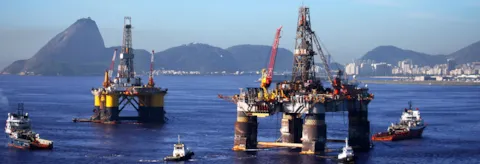Brazil's progress in safeguarding offshore operations
Recent increases in Brazil's offshore energy production result from strategic planning and technological advancements. The Santos Basin is a significant region for the country's energy sector, with pre-salt fields such as Tupi and Libra contributing notably to oil and gas output. Activities in the Santos Basin play an essential role in Brazil's move toward energy independence, as the nation increasingly depends on offshore resources to fulfill its energy requirements.
The International Maritime Organization (IMO) recently approved the Brazilian Areas To Be Avoided (ATBA) to lower the risk of collisions among merchant ships, oil platforms, and support vessels operating in the Santos Basin.
Prepared in 2018, the ATBA proposal outlines two polygonal areas totaling 7,363.64 km² where navigation by merchant ships not involved in offshore activities should be avoided. The analysis and definition of the ATBA prompted debate on technical challenges, collision risks, maritime traffic growth, and navigation route adjustments.
DNV conducted a relevant study, similar to one performed in 2006, and in 2023 provided a technical assessment estimating collision frequency between merchant ships in transit and offshore production and storage units (FPSOs) in strategic oil & gas production zones in Brazil. The survey utilized maritime traffic data from the Brazilian Navy to identify routes with potential risk to FPSOs, evaluating scenarios involving human error or mechanical failures leading to vessel drift.
The study assessed two scenarios:
- Free navigation without traffic restrictions;
- Implementation of an Area to Be Avoided (ATBA), establishing a zone to reduce the presence of unrelated merchant vessels and lower collision risks.
The analysis was based on conditions in 2023, considering both merchant ship traffic and installed FPSOs. It also projected possible changes in collision frequency over coming years based on increased production units and maritime traffic growth.
This quantitative approach provided a technical basis for submitting the ATBA proposal to the IMO.
ATBA implementation is anticipated to reduce collision risk for three primary reasons:
- Increased navigator awareness of areas to avoid;
- Adjustments to navigation routes previously crossing or bordering the area;
- Introduction of preventive measures associated with the ATBA’s formal designation.
The initiative marks a step toward improving safety for offshore units and the marine environment in the region. DNV participated by developing studies to support this process.
